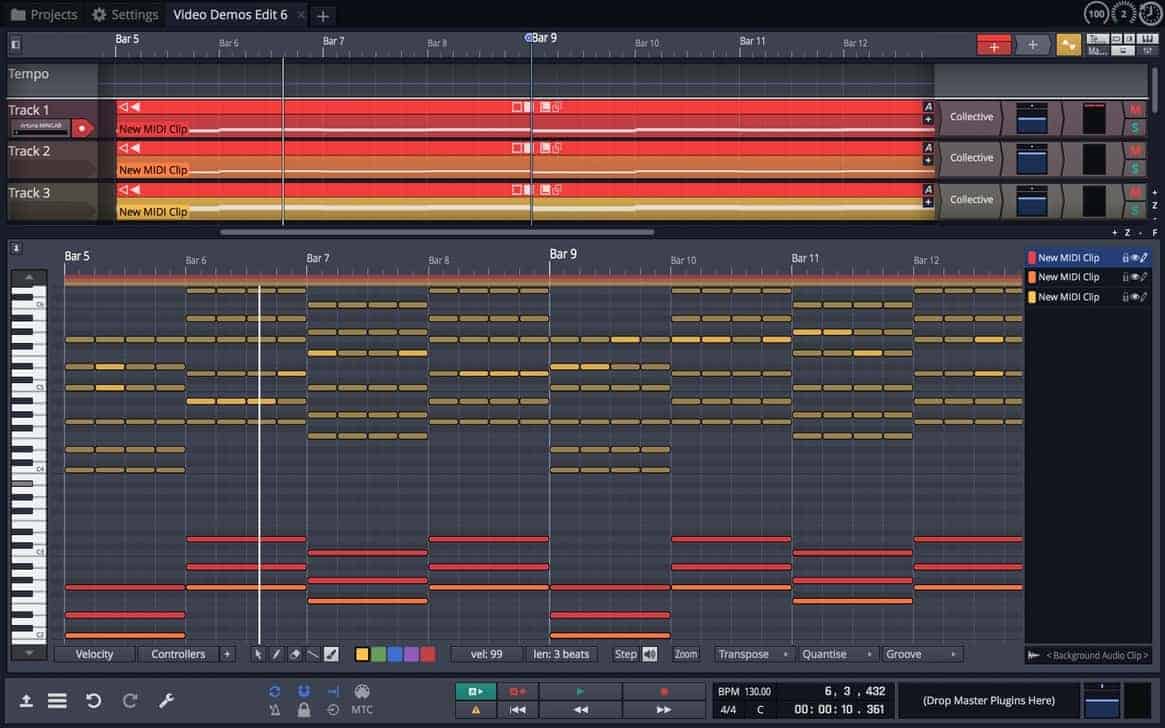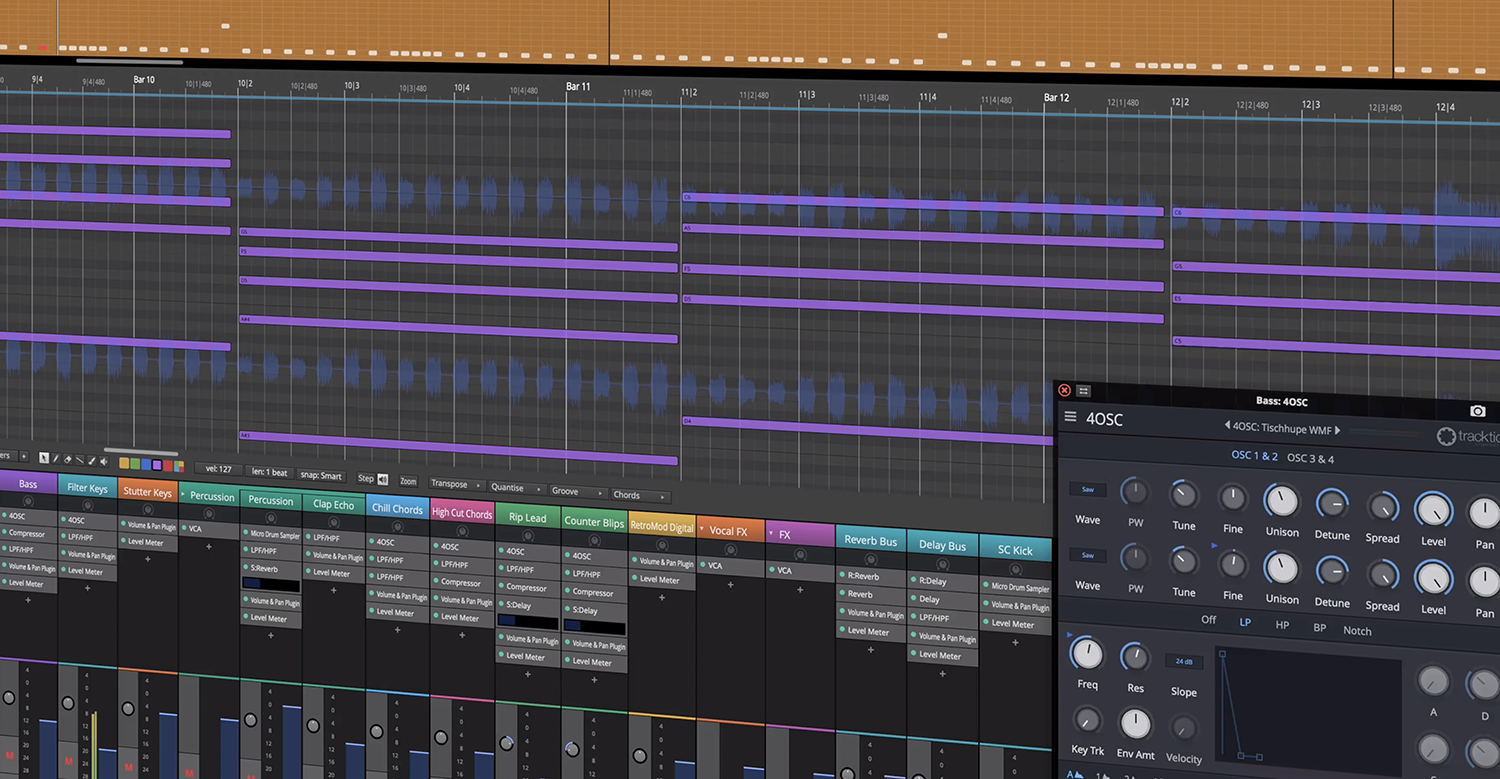
This is a logarithmic method of displaying the amplitude. In this view the Vertical Scale is shown in dB. This view shows that the recording has been made loud enough and fills the display nicely. The following example is exactly the same recording as that above displayed in Waveform (dB) view.

Human hearing would need a reduction of -18 dB to make audio "appear to sound" half as loud. Halving the volume on the linear scale (for example, deamplifying a sound with a peak of +/- 1.0 by -6 dB to bring it to +/- 0.5 on that scale) does not sound all that much quieter. However, the linear waveform does not correspond to the way your ears work-they sense quiet sounds more effectively. When zoomed in edit points are easy to find. The default linear Waveform view is very convenient for editing since the majority of audible work is on the screen. The waveform view can be switched to a dB logarithmic view by right-clicking on the track's Vertical Scale and selecting " dB" from the dropdown context menu. The horizontal center line denoting zero amplitude (silence) can also now be clearly seen, with positive samples above the center line, and negative samples below.

The waveform can now be clearly seen as joining together many individual sample points (the dots). The line you see now represents the peak level of the samples, that is the top of the darker part that you saw when you were zoomed out.īelow is an example of a dark blue only waveform, obtained by zooming in about 12 times.

If you zoom in horizontally far enough, the light blue display will disappear, because there are not enough samples to provide a meaningful average in the region being displayed. This is a rough guide to how loud this area might sound, but there is no way to extract or use this RMS part of the waveform separately. The light blue part of the waveform displays the average RMS (Root Mean Square) value for the same group of samples.At default zoom level Audacity will display many samples within that pixel width, so this pixel represents the value of the loudest sample in the group. The dark blue part of the waveform displays the tallest peak in the area that pixel represents.

The waveform view uses two shades of blue, one darker and one lighter.


 0 kommentar(er)
0 kommentar(er)
